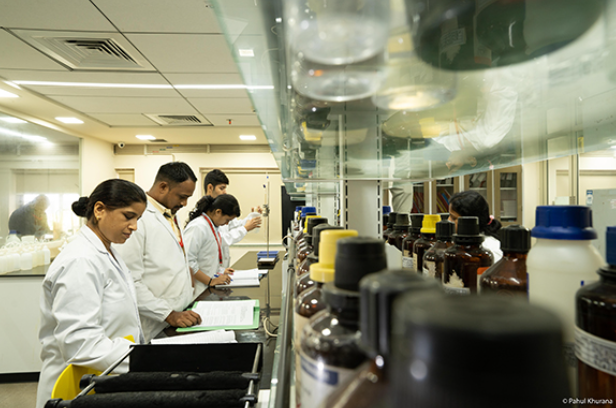
Rice, as a staple food for billions worldwide, plays a crucial role in global agriculture and food security. Ensuring its quality and safety demands meticulous analysis and testing, driving the constant evolution of rice lab technology. Central to this evolution is the refinement of measurement techniques, with pipette measurement emerging as a cornerstone of modern rice analysis.
The Traditional Paradigm:
In the early days of rice lab technology, traditional methods relied on manual measurements and subjective assessments. This approach, though effective to a certain extent, was labor-intensive, prone to human error, and lacked the precision demanded by modern standards. Furthermore, it often hindered scalability and reproducibility, limiting the efficiency of rice analysis processes.
The Advent of Automation:
As technological advancements revolutionized laboratory practices, automation emerged as a game-changer in the realm of rice lab technology. Automated pipetting systems replaced manual pipettes, offering unparalleled accuracy, reproducibility, and throughput. This shift not only accelerated testing processes but also enhanced data integrity and reliability, laying the foundation for more robust quality control measures.
Empowering Efficiency with Electronic Pipettes:
The integration of electronic pipettes marked another significant milestone in the evolution of pipette measurement technology. These precision instruments combine advanced automation with user-friendly interfaces, allowing researchers to perform complex pipetting tasks with unparalleled ease and accuracy. Moreover, features such as programmable settings and data logging streamline workflow management, optimizing efficiency in rice lab settings.
Pushing Boundaries with Robotics:
In pursuit of further automation and efficiency, robotics have emerged as a cutting-edge solution in rice lab technology. Robotic pipetting systems leverage advanced robotics and artificial intelligence to execute complex pipetting tasks with exceptional precision and speed. This transformative technology not only reduces human intervention but also minimizes the risk of contamination, enhancing the overall quality and reliability of rice analysis.
Harnessing the Power of Liquid Handling Workstations:
Liquid handling workstations represent the pinnacle of pipette measurement innovation in rice lab technology. These integrated platforms combine robotic precision with customizable workflows, enabling high-throughput pipetting tasks with unparalleled accuracy and efficiency. By automating repetitive pipetting processes, liquid handling workstations empower researchers to focus on data analysis and interpretation, accelerating scientific discovery in the field of rice research.
Navigating Challenges and Opportunities:
Despite the remarkable progress in pipette measurement technology, challenges persist in the realm of rice lab analysis. Ensuring compatibility with a diverse range of rice samples, optimizing workflow integration, and addressing cost constraints remain key considerations for researchers and laboratory professionals. However, these challenges also present opportunities for innovation and collaboration, driving continuous improvement in rice lab technology.
The Future Horizon:
Looking ahead, the future of pipette measurement in rice lab technology is poised for exponential growth and innovation. Advancements in microfluidics, nanotechnology, and data analytics promise to redefine the boundaries of precision and efficiency in rice analysis. Furthermore, interdisciplinary collaborations between academia, industry, and government entities are essential to harnessing the full potential of emerging technologies and addressing global challenges in food security and sustainability.
Conclusion:
In conclusion, the evolution of rice lab technology stands as a testament to human ingenuity and innovation. From humble beginnings to cutting-edge solutions, the journey of pipette measurement epitomizes the relentless pursuit of excellence in rice analysis. As we embrace the future with optimism and determination, certifiedmtp.com remains committed to supporting the advancement of rice lab technology through our high-quality materials testing and lab supply equipment. Together, we pave the way towards a more sustainable and resilient future for rice production and food security worldwide.
FAQs:
1. What are the key advantages of electronic pipettes in rice lab analysis?
- Electronic pipettes offer precise control over dispensing volumes, reducing the risk of human error and ensuring reproducibility in rice testing.
- Programmable settings and data logging features enhance workflow management and documentation, improving efficiency and data integrity.
- User-friendly interfaces simplify operation and training, making electronic pipettes accessible to researchers with varying levels of expertise.
2. How do liquid handling workstations contribute to high-throughput rice analysis?
- Liquid handling workstations automate pipetting tasks, enabling researchers to process large volumes of rice samples with minimal manual intervention.
- Customizable workflows accommodate diverse experimental requirements, from sample preparation to data analysis, optimizing efficiency and productivity.
- Integration with advanced robotics and software systems enhances precision and accuracy, ensuring reliable results in high-throughput rice analysis workflows.
3. What role does robotics play in enhancing pipette measurement technology for rice analysis?
- Robotics automate pipetting tasks, reducing the reliance on manual labor and minimizing the risk of human error in rice lab analysis.
- Advanced robotics enable complex pipetting maneuvers with precision and speed, improving throughput and scalability in rice testing workflows.
- Integration with artificial intelligence and machine learning algorithms enhances the adaptive capabilities of robotic pipetting systems, optimizing performance and reliability in diverse rice analysis applications.
![Инстаграм Блог - Исправьте свои проблемы [Советы и рекомендации]](https://wikigeneral.net/wp-content/uploads/2023/05/cropped-Инстаграм-Блог-Исправьте-свои-проблемы-Советы-и-рекомендации.webp)





